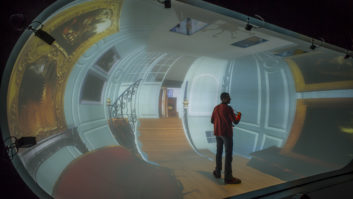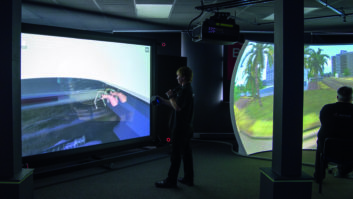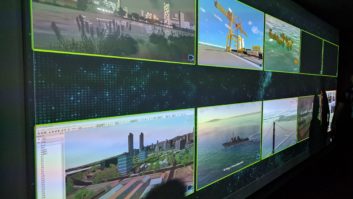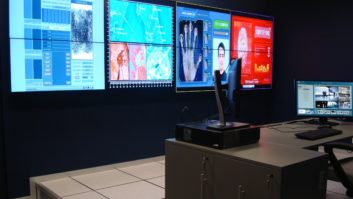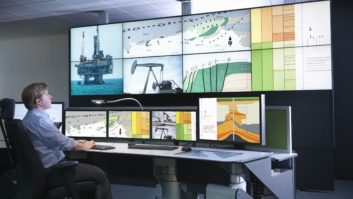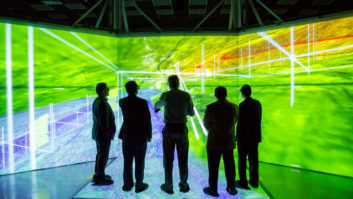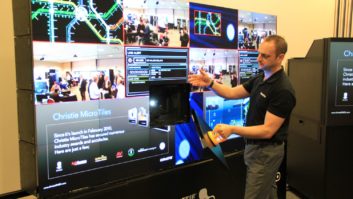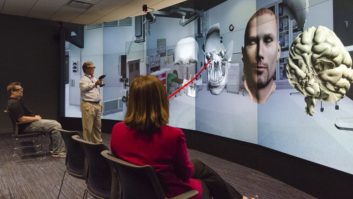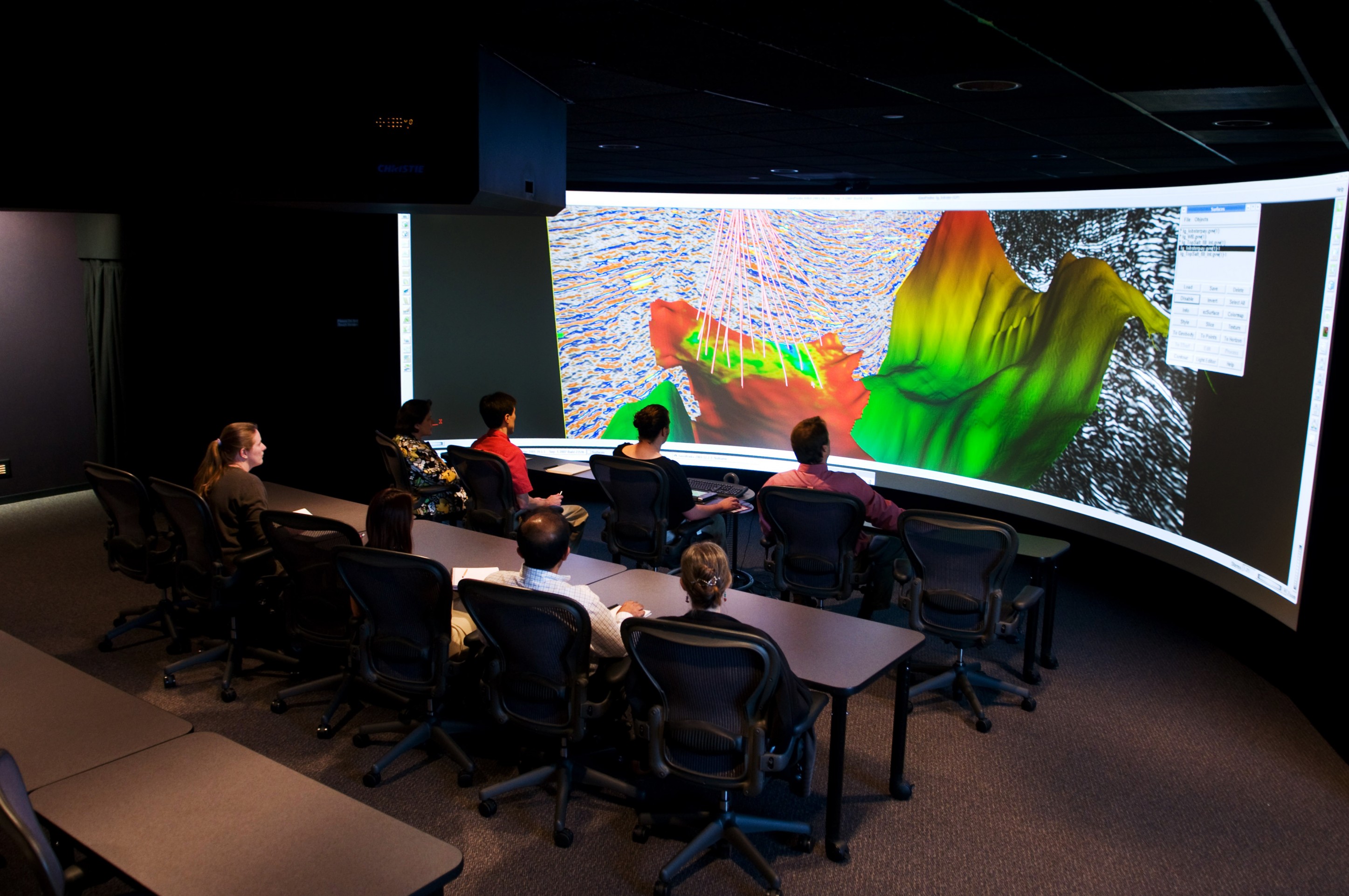
In the first part of our feature on AV systems within the oil and gas industry, visual collaboration was revealed to be a key factor in improving efficiency. Here Ian McMurray looks at how investment in higher resolution displays is helping to turn data into information.
“High resolution has been a big driver in oil and gas to 4K and beyond,” says David Griffiths, director, market development EMEA at Christie Digital Systems. “That’s where we’re seeing big investment, both in 2D and 3D. We’re also seeing more collaborative videowall displays, 3D immersive installations, single 3D screens – and not just in the control room, but everywhere, such as in the reception area. We’re seeing more and more demand for real-time applications and for big data strength, helping companies turn data into information that makes sense.”
Kirkpatrick sees similar demand. “3D and 4K displays are becoming important,” he notes, “to enable the display of more graphically sensitive and detailed information in real-time environments.”
“Prospecting for oil and gas has become a major challenge worldwide,” confirms Alexis Sakallis, business development manager, Dubai at integrator Pixel Projects. “Drilling is extremely costly, and new technologies being used to identify the best extraction areas involve very large 3D screens to visualise the different subsurface layers. On the operational side, large AV solutions such as videowalls are being used to monitor both the manufacturing and transportation of oil and gas products. All of this means that the industry has increased its investment in visualisation solutions.”
“We’re seeing increased demand for recording collaboration or control room activity, for the purpose of what you might call ‘after-action review’ and continuous improvement,” adds Hans Dekeyser, VP strategic marketing industry and government at Barco. “This can help to educate new personnel also.”
The education to which Dekeyser refers is an important issue.
“The oil and gas industry has long been seen as an ageing industry with personnel who have been involved in the business for decades,” notes Graeme McGuire, operations manager, AV and offshore solutions at integrator AVC Media. “With very few younger people coming through the ranks to replace them. There is a concerted effort from both companies and trade bodies to recruit a new generation of people, and the use of advanced technologies is seen as a positive step to facilitate this.”
Christie’s Griffiths is also aware of the issue of skills retention and recruitment.
“It’s unquestionably a driver,” he says. “In fact, we’re working with oil and gas industry leaders to develop their own training academies – internal universities – so that, where they can’t find people in the market with skills, such as knowledge around 2D and 3D for example, they educate them instead.”
Similar – but dissimilar
In some ways, the oil and gas market is not dissimilar to any other AV market – but it does have subtle (if important) differences, a point made by Barco’s Dekeyser.
“The oil and gas market is a market that blends the general meeting room requirements and control room/operational decision-making requirements the most,” he believes, “whereas in other industries those needs and facility spaces are often more separate. This means that connecting those rooms, interoperability of systems, common user interface, higher-end visual collaboration and decision-making capabilities are more ubiquitous across the enterprise, which is a key reason why this market is attractive for innovative manufacturers.”
In fact, there is an extent to which it could be said that the sector is one that can act as something of a showcase for almost all AV technologies – as Gareth Gray, regional manager for Scotland and head of the UK energy vertical at NEC Display Solutions describes.
“The use of AV technology within the oil and gas industry is both wide and varied with many of the world’s leading exploration and production companies having departments dedicated to supporting their AV environments both regionally and globally,” he says. “AV technology touches almost every part of their business. Onshore geophysicists use advanced 3D visualisation and 4K UHD for modelling – Schlumberger has one of the most advanced E&P [exploration and production] software platforms called Petrel. Remote subject matter experts use visual collaboration and telepresence to provide advice to colleagues across distance and time zones – companies like Baker Hughes have video links to platforms for this purpose.
“Telemedicine allows remote doctors onshore to quickly diagnose potentially life-threatening conditions such as stroke or heart issues; both Shell and Conoco Philips use telemedicine systems on platforms to link to hospitals onshore,” he continues. “Incident management and crisis rooms provide critical information to families, emergency services and press. Training centres provide skills on safe handling of tools and machinery. And there’s the entertainment and comfort of staff working offshore through digital cinema, televised sporting events, facilitating video calls to loved ones. AV technology is truly pervasive throughout the industry.”
Case study: Emerson chooses Barco to show how it can be done
American technology solutions company Emerson invested nearly $70 million in a new 282,000sqft iOps ‘Integrated Operations’ Center in Round Rock, Texas that offers a live demo environment to show oil and gas companies the way to succeed.
The visualisation platform comprises a 30ft Barco rear-projected LED videowall to simultaneously display dozens of sources from various locations, creating an operational picture that enhances situational awareness.
Utilising Barco Control Room Management Suite (CMS) software, operators can dynamically display, configure and share all types of rich content, creating unique perspectives to illustrate supply and operations data and graphics. Barco Galaxy NW-12 projectors provide stereoscopic imagery utilising Emerson’s control, automation and management software solutions to precisely render visuals in 3D.
According to Barco, one of the most important aspects of a visualisation platform for oil and gas companies is collaboration due to the distributed nature of their operations. Emerson integrated its DeltaV Digital Automation System using the Open API for Barco’s CMS to fully leverage the benefits of the control room management software. Now, operators can quickly and easily manipulate the overview display from an operator’s desktop display using a convenient sidebar to trigger layout changes, send video/images to the conference room’s video teleconferencing system, or even send data to a mobile worker located anywhere in the world.
AVC Media AV services
Barco display and visualisation solutions
Christie visual display solutions
Pixel Projects AV integration
